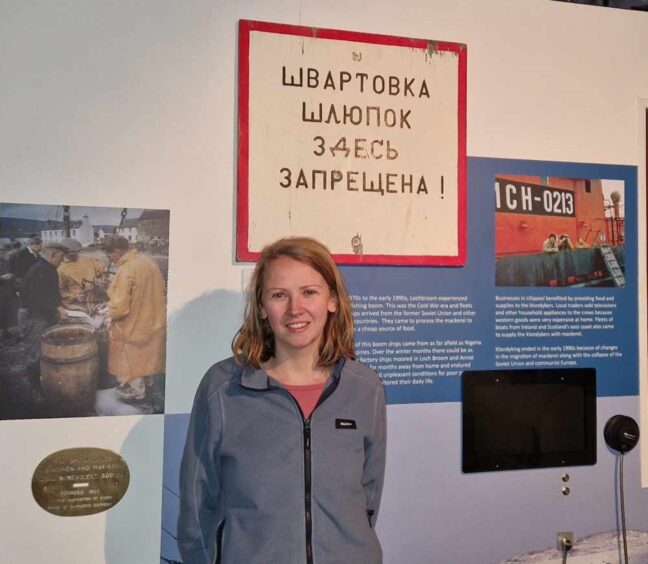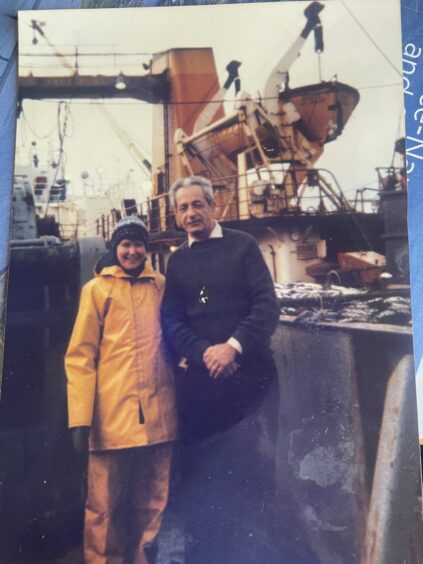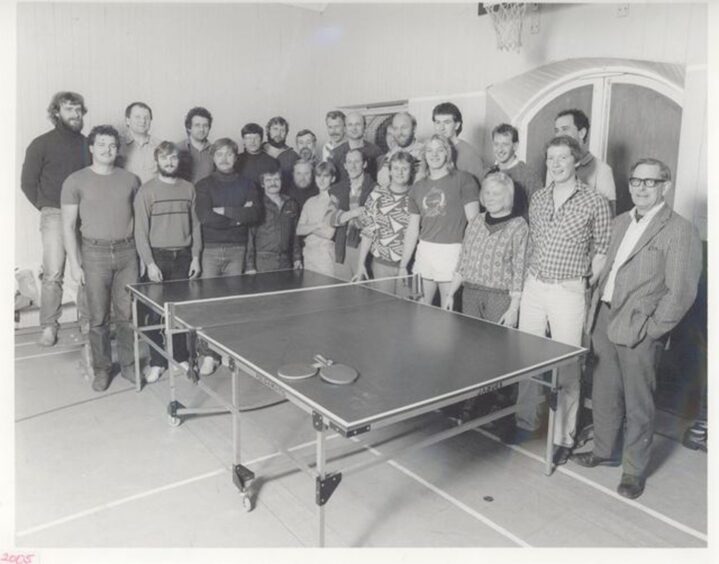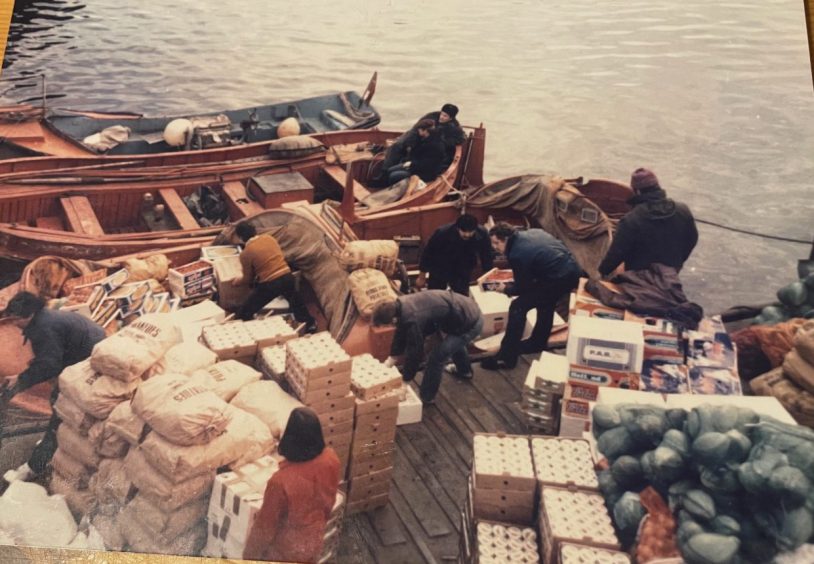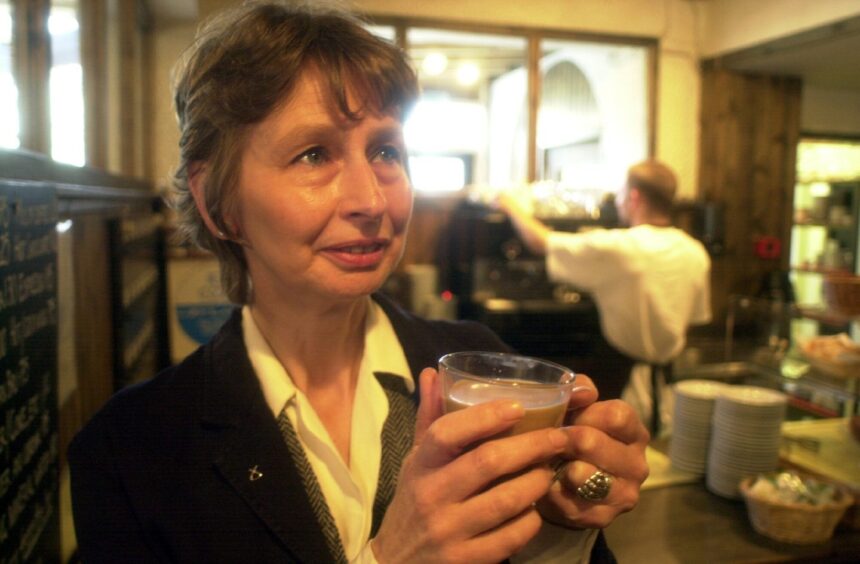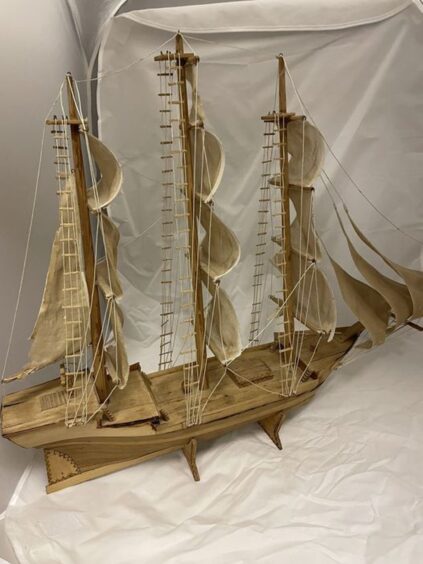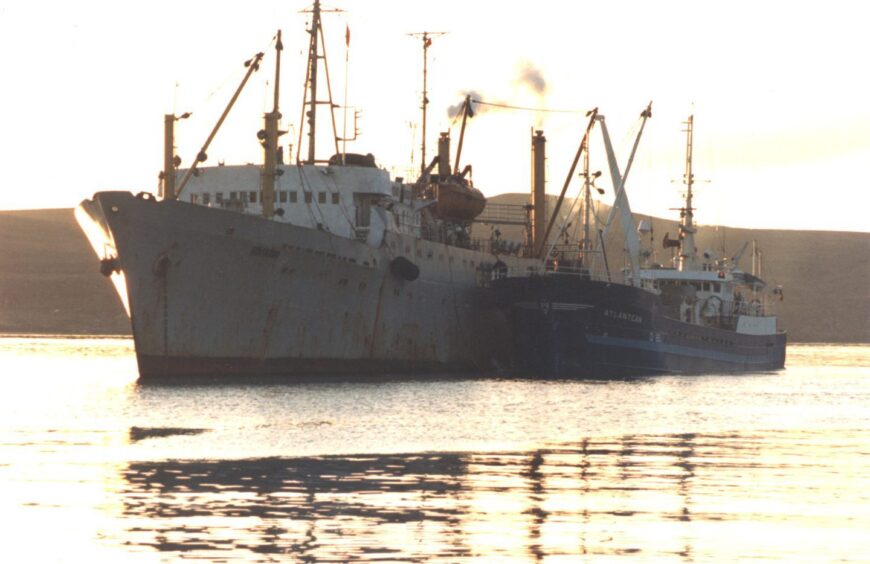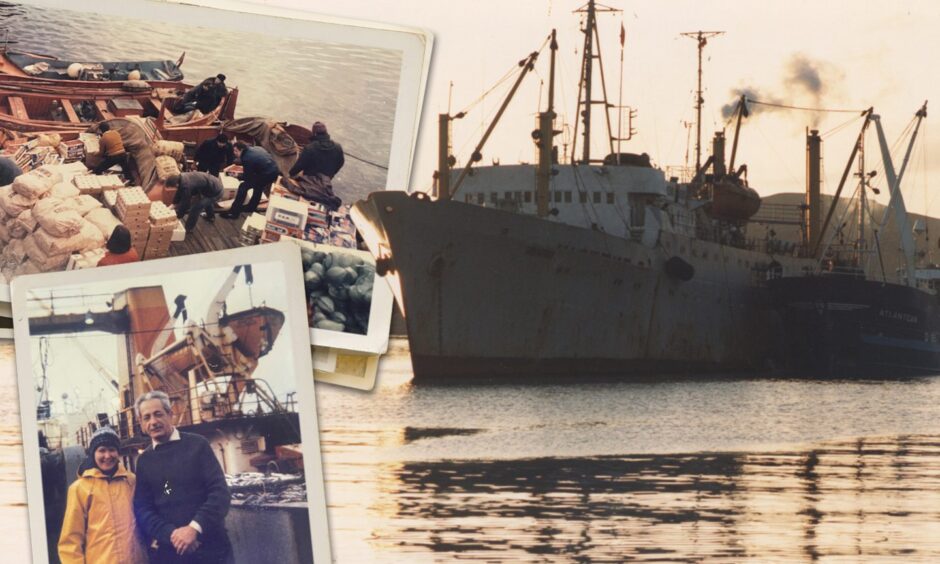
Ullapool played host to dozens of nationalities from the 1960s to the 1990s in a particularly vivid episode in its history.
The visitors were workers from visiting Klondykers, massive floating factories which followed the UK fishing fleet round the coast, canning on the spot the herring and mackerel bought from the local fleets, ready for their countries to export.
The tiny west coast fishing village welcomed thousands of workers from the Eastern bloc in a spirit of Cold War harmony which amazed visitors, particularly Americans.
An economic boom for the village
Most of the Klondykers were Russian, but they also came from East Germany, Bulgaria, Romania, Poland, Egypt, Africa and Korea.
Their arrival gave Ullapool much needed winter business, with crews coming ashore for everything from supplies to electrical goods to take home.
Mairead Bush of Ullapool Museum sets the scene.
“During its height, about three times the population of Ullapool would be out living on the loch.
“There would be queues of boats maybe six long waiting to reach the pier. The shops and pubs would be filled with locals and visitors alike.
“Other than the financial boost, morale was high at the time and by all accounts, the locals enjoyed having these visitors.
Friendly seamen
“The sailors were very friendly and loved music, would burst into song at the drop of a hat.
“They would happily welcome locals onto their ships and share their food.”
Bonanza for the grocery stores
Residents Topher and Jan Dawson decided to extend an invitation to some to participate in the annual feasting for our national bard.
It turned out to be a little complicated.
Topher said: “One year we decided to invite twelve Russians to our Burns Supper on Scoraig, since a whole fleet of them were moored off Achmore.
“We sailed out to the biggest ship.
They asked if I was a doctor
“They would only let one of us up the rope ladder so I went and when I got to the top they asked if I was the doctor.
“I said no, but as they did not understand what I wanted I was taken to the mate, who summoned the captain, and eventually the fleet captain who had some English.
“He had heard of the poet Burns but said there were customs problems. ‘I will radiogram Moscow,’ he said.
Nyet!
“The message came back ‘Nyet!’
“However he told me that if we went to a Bulgarian boat they would be much more flexible and so it proved.
“We were all allowed on to the Bulgarian ship and had coffee with their captain in a cabin crammed with Bang and Olufsen hi-fi gear he was taking home.
“In the end they could not come either but at least he was friendly.”
MacDonald’s Supermarket enjoyed an extended season thanks to the Klondykers.
She said: “I found all the foreign the seamen very, very generous and kind.
“They were very often young men with families and had left them for months and months on end.
“I had a young son and daughter, they were generous to both, and interested in their lives.
Children went aboard Klondykers in Ullapool
“Very often my children went on board and were very well received.
“We were often invited on board if there was any celebrations and we’d go out on my husband’s Sea Rider to find they’d made a fine spread of the food, fish, caviar, very often well-cooked baking goods as they had great bakers on board.
“We were entertained because there was a lot of singing.
Lots of vodka
“They loved their music and burst into song at a drop of a hat.
“Yes there was a lot of vodka, their national drink.
“We had many good evenings on board.”
Former MSP and Ullapool’s famous Ceilidh Place proprietor Jean Urqhuart cherishes happy memories of those days.
She said: “I have odd memories of things like we had a ship that came in with an Egyptian crew.
“They were sitting cross legged on the street selling jewellery.
Russian hats much in evidence
“The Russians were always walking around with black bin bags, and they would have hats.
“I mean Ullapool was mostly, all the men were wearing Russian hats and smoking Russian cigarettes and drinking vodka.
“We had caviar on the café counter for a while as well. For there was lots of bargaining going on.
“All of it I’m sure quite illegal but I guess it wasn’t an enormous thing at the time. And another thing was the Bulgarians made these wooden model ships and sold them and you could walk round Ullapool; people would have these in their window.”
The boom time gradually ended
By the mid-90s, the Klondykers had stopped visiting UK waters. The fish were moving further north, and there was political and economic turmoil in the Klondykers’ home countries.
Resident Chrissy Boyd says it wasn’t until much later that villagers realised the magnitude of what had happened to Ullapool and its people.
Hard to take in the significance
She said: “We were in the middle of it all, it was all happening around us, but it wasn’t until afterwards did you actually realise the significance and the size and scale of it all.
“We didn’t properly understand it at the time, and it’s only now, looking back that we’re thinking —crikey. That was something.”
You might enjoy:
